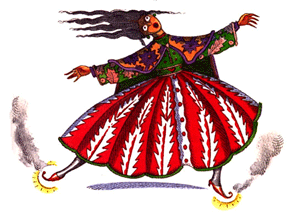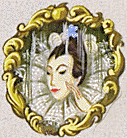
THE WITCH AND THE QUEEN |
This course meets the qualifications for 12 hours of continuing education
|
Who is the fairest one of all? "Not you, dear, not anymore." What are the clinical issues facing a therapist working with women at midlife? What are the clinical issues facing a therapist who is a woman at midlife? What countertransference arises for the therapist? How does depression impact with hormones? How is menopause a developmental threshold in a woman's individuation process? Can the raging witch transform into the creative queen? |
maintains responsibility for the program. |
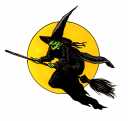
Table of Contents
Introduction
Chapter 1. The Maiden/Mother is Dead: Long live the Witch!
Chapter 2. The King disappears
Chapter 3. Mirror, mirror on the wall
Chapter 4. The Witch
The Cannibal WitchCaught and Caged
The Alchemical Witch: The Apple and the Secret Room
The Red Hot Shoes: Burning off Rage
Chapter 5. Transformation
"I'm melting": Finding Feelings
The Departure: Getting Lost
The Sacred Cavern: Retreat and Solitude
The Animals Arrive: Regaining Energy
Chapter 6. Creation
Integrating the Witch's Power
The Arrival of the New Order: The Path Maker
Return of the Interior King
Chapter 6. The Queen
The Queen's Transparency
Unto Herself
References
Post Test
Authors
Learning Objectives The Therapist will be able to:
|
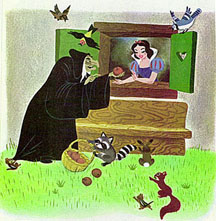
|
Kate was asked to do a talk and felt disconcerted. She agreed to donate her time and her sponsor, quite frankly, had acted like a jerk. Instead of being grateful, he quibbled. They couldn't agree on a date, a place, or a topic. Later Kate called her friend Lauren on the phone while she was preparing dinner. Lauren asked gently what the noise was. Kate glanced down in response to Lauren's question. She was pounding chicken breasts for dinner and the poor fillets looked thin as tissue paper. Kate started to joke that she should talk about witches, because that certainly was how she felt. Lauren added, "Oh! They should be treating you like a queen." Thus began The Witch and the Queen. For surely if you do not feel like a queen, the witch will emerge. Lauren and Kate, both women at midlife, decided to work together on this theme. They searched for images of witches and queens. To their surprise and dismay, while books revealed a myriad of illustrations of witches, virtually no images of the queen in her preeminence appeared. They realized that the archetype of the queen as the mature woman in her ripeness-of-being was missing. Seeking in other cultures and other times, they discovered that many symbols of transformation were encoded in fairy tales but because of the pervasive ambivalence toward women's power the image of the queen was primarily presented in a negative form. The Witch and the Queen reclaims the essence of the positive pole of the queen archetype. Reflecting on their clinical work, they were struck by how much courage their women patients showed in confronting the inner witches that emerged at midlife and in struggling to find and stay on the queen's path. Lauren and Kate recognized that they faced similar issues at midlife. That fateful conversation over the chicken breasts happened five years ago; since then, Kate and Lauren have felt like witches and queens in their lives, although they strive for 'queenliness'. They co-presented The Witch and the Queen, inviting students to come dressed as either a witch or a queen. Costumed as witches, Lauren and Kate transformed themselves into queens by the end of the talk and had tea with the witches and the queens in the audience. Please join them in exploring the developmental and archetypal passages of women at midlife. P.S. The chicken was very tender. |
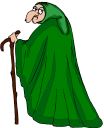
A hideous witch lives in the mirror of a maturing woman, ready to grip her soul with envy, hatred, and shame. Lines that appear around her eyes are often called "crows feet," birds who consort with witches. She reflects on her thickening figure, hair sprouting from her chin, and her longer teeth. Is she transforming into the boar whose heart the evil stepmother ate out of her envy for Snow White? As menopause approaches, the image of the fertile, desirable woman becomes the dried up hag of childhood fairy tales and nightmares. Only the crone is offered in consolation.
Recovering the queen archetype in her "ripeness of being" offers redemption for menopausal woman in their journey towards renewed vision, maturing wisdom and grace. The Witch and the Queen guides the therapist through the maturing woman's transformation from witch: isolated, critical, stingy and ravenous, to queen: compassionate, fierce, radiant, and sacred.

Unlike books that explore the witch from the child's viewpoint or those that glorify the crone, this course will look at the wicked witch from fairy tales as a phase in the inner development of a woman facing midlife, The queen is rescued from her role as the evil stepmother, witch, or the king's spouse and is offered as an enduring model for feminine maturity that can guide and inspire women through midlife and beyond. The queen is "unto herself."
The Witch and the
Queen redeems the witch and reclaims the queen.
|
Gabriela settled into the therapy chair with a deep sigh. She had just been to see her ob-gyn for her annual exam and at 45 was feeling the hormone swings of perimenopause. We discussed her feelings about aging and menopause, and the transition from maiden to woman to crone. She suddenly sat upright in the chair and said "Oh no! I am not ready to be a crone!" |
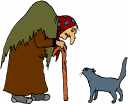
Forty million women are in menopause with 3500 women entering menopause daily. In 2000, a third of the women in the United States were over fifty, the average age of menopause. In 1998, thirty-eight million baby boom women were between the ages of thirty-four and fifty-two, many of them in "perimenopause", the years of hormonal shifts preceding menopause. The generation that created the sixties, the women's movement, and the New Age will reinvent midlife and old age.
The Witch and the
Queen provides a new mirror for therapists to view a woman's full
maturity that encompasses her movement towards increased integrity and
grace.
| Gaby
was troubled by the intensity of her feelings, especially the
negative ones. The trigger this session was her stepdaughter. "I
hate her guts! She is so snotty...and her boobs are bigger than
mine!" Angelique was 16, lush and succulent in her beauty. Gaby
was 45 and facing the loss of her fertility. She raged, delighted
not to be "nice". Her husband Peter had all but abdicated,
telling the women in his life that they had to work it out for
themselves. The king had fled the kingdom. The queen and good
mother in Gaby’s psyche were dead, replaced by the witch and
evil stepmother.
As you read this course, you will follow Gaby's transformation..... Gaby cried for weeks, the tears melting the witch. She grieved the loss of her own fertility, the babies she did not have, the hard times of her life. Only after she realized that she had blamed Angelique for Peter's reluctance to have more children did she soften toward her stepdaughter. She realized that Angelique was a muddled teenager and not a threat. Peter reappeared when he stopped feeling caught and pulled between his wife and his daughter. Gaby felt radiant and powerful at Peter's fiftieth birthday party. She wore a purple gown. |
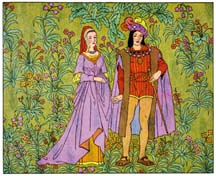
This course will introduce you to women at midlife and beyond. We will follow their therapeutic journeys through a series of vignettes.
You will meet:
Gaby is a 45 year old from a close Latino family who married "late" to Peter, who has a teenage daughter Angelique from a previous marriage. Gabriela had an abortion early in her relationship with Peter and now regrets never having children of her own. She has a younger sister Cecilia who at 22 married a Latino man and now has five children.
Weslia is 49, simultaneously looking forward to and dreading her 50th birthday. Lesbian, she has been living with Sue since her early 40's, Weslia is the stay-at-home mom for their two young children while Sue works out of the home. Weslia's Mom was just diagnosed with Alzheimer's disease.
Sally, age 52, is the mother of two young adults. Steven graduated from high school two years ago and is living at home in the basement. Sheila graduated from college with honors and has moved back home. They are both unemployed and job hunting. Sally and her husband of 27 years, Philip, are at their wits' ends. The failure of the 'empty nest' is putting pressure on their plans to travel and play. Philip, 7 years older than Sally, is a successful attorney. Sally has entered menopause and desperately craves some time to rattle about alone in her own home.
Louise at 64 would love nothing more than to retire and work in her garden. However, she is divorced, still needs to work, and is raising her grandson. Freddy, a 5 year old boy with fetal cocaine and alcohol exposure, struggles with behavioral and learning difficulties. Freddy's mother died of AIDS, and his father, Louise's son, is in prison for drug dealing. Louise thinks of herself as a 'survivor,' having had breast cancer seven years ago.
Suzanna is 72. Her children are launched and she has been widowed for more than a decade. Active and healthy, she lives alone and is an observing Orthodox Jew. Her children would like her to remain in their childhood home, a large rambling house, but can see that it takes a lot of energy to maintain. They would like their mother to have some live-in help for the house and the grounds. Suzanna is resisting, as she values her privacy and independence. The children's alternate plan is that their mother move closer to them, but again she is resisting. She has three sons and a daughter, Jane, as well as one granddaughter and several grandsons.
Cynthia at 83 suffers from crippling arthritis. She is afraid of being an older, physically impaired woman living alone. She is debating whether to enter an assisted living situation. Her caustic comments and physical limitations have alienated her friends and she has gradually become more isolated and less involved with her interests. Her two sons live on the East Coast. Cynthia supports herself on a pension, social security from her deceased husband, and a small trust fund that she inherited.
Josephine
is a vital 92 year old African American. Never having married,
she worked as a school teacher and then a principal until her retirement. The
granddaughter of a slave, she is writing her memoirs. She taught writing
at the local university extension until ten years ago, which is where
we met her. We are among the 'young people' whom she continues
to mentor. She swims every day, uses the Internet and has many friends. She
is frightened of becoming dependent or incapacitated from a stroke.
The Witch, who is ageless, combines elements from her earlier appearances in Snow White, Hansel and Gretel, Baba Yaga and the Snow Queen. She then finds her own voice while attempting to transform into a queen.
Personal comments, reflections, and countertransference remarks are in blue. The voice you read is spoken as "I", although both Kate and Lauren are writing. This is because some of the things that are said are so witchy that each hopes that you will attribute it to the other. In more than 10 years of teaching together at U.C. Berkeley Extension, they have learned the value of collaboration and confusion—and the dangers of splitting. So rather than one being seen as the witch and one as the queen, this course is written in the first person.
Disclaimers:
- This book is not about practitioners of Wicca, but rather the archetype of the witch. Nor does it address witch trials nor the persecution of women believed to be witches.
- Any references to stepmothers are not to apply to actual stepmothers, who are often good and wonderful. The evil stepmothers in fairy tales were created to illustrate the negative side of the mother.
- We will not be looking at the witch from a child's view point, which is often a splitting of the mother archetype, but rather from the perspective of women at midlife.
- The voice of the witch, after she puts on the 'red-hot shoes,' is written by Kate.
- Not all women follow this model of transformation, nor need to. We have chosen women who illustrate elements of being captured by the witch archetype and who later evolved closer to an embodiment of an internalized queen.
We would
like to acknowledge all the women whose life stories have contributed
to this book: our mothers, sisters, aunts and grandmothers, our teachers
and clients, and our friends. Special thanks to Barbara Colety
Amatruda for her inspired correspondence. We also would like to thank
our families for their support. All identifying material has
been changed to protect confidentiality and some of the individuals
are composites that include element of several women's stories. Thank
you.

12
CE course
$144
![]()
888-777-3773
We do adhere to the American Psychological Association's Ethical Principles of Psychologists. Our courses are carefully screened by the Planning Committee to adhere to APA standards. We also require authors who compose Internet courses specifically for us follow APA ethical standards. Many of our courses contain case material, and may use the methods of qualitative research and analysis, in-depth interviews and ethnographic studies. The psychotherapeutic techniques depicted may include play therapy, sandplay therapy, dream analysis, drawing analysis, client and therapist self-report, etc. The materials presented may be considered non-traditional and may be controversial, and may not have widespread endorsement within the profession. www.psychceu.com maintains responsibility for the program and its content. |

|
|
|
